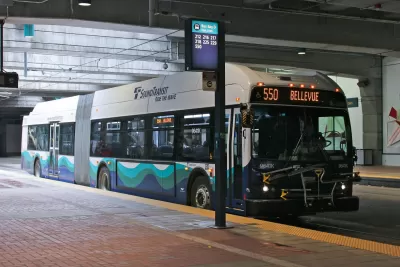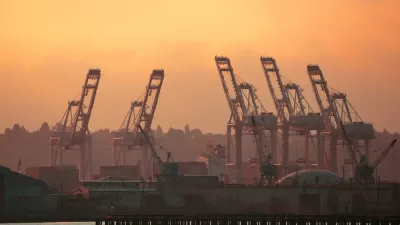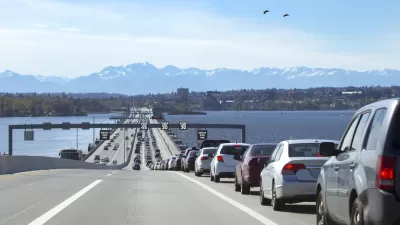The 2017 survey shows that most people drive, but income and housing location also affect people’s options and choices.

Stephen Fesler reports on the Puget Sound Regional Council’s release of its 2017 household travel survey data. The survey gathered information on travel behavior, parking and transit costs, and the factors related to mode choice.
It finds that most people, over 80 percent, have free parking at work, and high-income workers have more access to subsidized transit passes. “Larger employers–which tend to be higher paying–are required to create a [Commute Trip Reduction] program for employees. These programs often include subsidized or free transit passes. However, that often leaves lower-income individuals without cheaper transit options unless they qualify for ORCA LIFT, a reduced fare program that King County launched in 2015,” writes Fesler. In addition, the majority of transit users are reaching transit on foot.
Most people across all income levels drive, but lower-income households are more likely to walk or use transit, the survey shows. Fesler describes the mode choice differences by race:
Asians had the highest drive-alone and biking rates while reporting lower shared driving trips. Black, Latino, and other multiracial households reported double the transit rate, substantially lower drive-alone rates, and higher shared driving trips. Caucasian households had the lowest transit use rates, but otherwise were middle of the pack for other modes.
The survey also examines the ways in which housing affects mode choice. People living in Seattle’s regional growth centers—higher density, mixed-use areas—are more likely to walk or use transit and less likely to drive than people living in centers outside of Seattle or those not living in centers.
In addition, most of the lower-income respondents report that living in a walkable area near activities is important to them. “This was increasingly less important to middle-income and higher-income households. It seems very likely that this is related to regular access to a car, which very low-income households generally lack,” notes Fesler. A similar income pattern emerged in terms of the importance of close transit, with a majority of low-income respondents indicating this was important.
FULL STORY: PSRC’s 2017 Travel Survey Shows Transit Is Popular, Free Parking Induces Driving

Study: Maui’s Plan to Convert Vacation Rentals to Long-Term Housing Could Cause Nearly $1 Billion Economic Loss
The plan would reduce visitor accommodation by 25,% resulting in 1,900 jobs lost.

North Texas Transit Leaders Tout Benefits of TOD for Growing Region
At a summit focused on transit-oriented development, policymakers discussed how North Texas’ expanded light rail system can serve as a tool for economic growth.

Why Should We Subsidize Public Transportation?
Many public transit agencies face financial stress due to rising costs, declining fare revenue, and declining subsidies. Transit advocates must provide a strong business case for increasing public transit funding.

How Community Science Connects People, Parks, and Biodiversity
Community science engages people of all backgrounds in documenting local biodiversity, strengthening connections to nature, and contributing to global efforts like the City Nature Challenge to build a more inclusive and resilient future.

Alabama: Trump Terminates Settlements for Black Communities Harmed By Raw Sewage
Trump deemed the landmark civil rights agreement “illegal DEI and environmental justice policy.”

Dear Tesla Driver: “It’s not You, It’s Him.”
Amidst a booming bumper sticker industry, one writer offers solace to those asking, “Does this car make me look fascist?”
Urban Design for Planners 1: Software Tools
This six-course series explores essential urban design concepts using open source software and equips planners with the tools they need to participate fully in the urban design process.
Planning for Universal Design
Learn the tools for implementing Universal Design in planning regulations.
City of Santa Clarita
Ascent Environmental
Institute for Housing and Urban Development Studies (IHS)
City of Grandview
Harvard GSD Executive Education
Toledo-Lucas County Plan Commissions
Salt Lake City
NYU Wagner Graduate School of Public Service




























